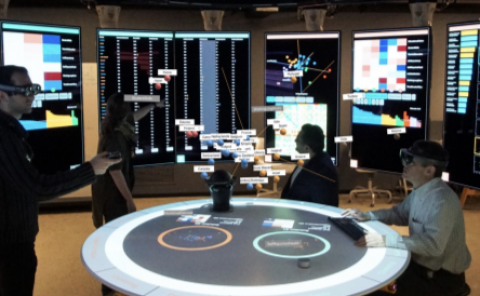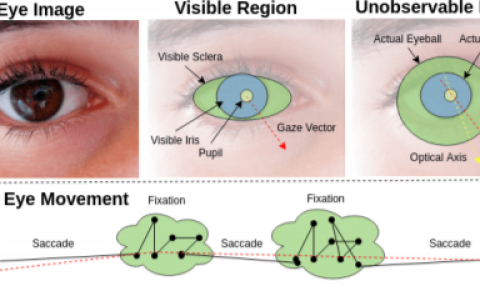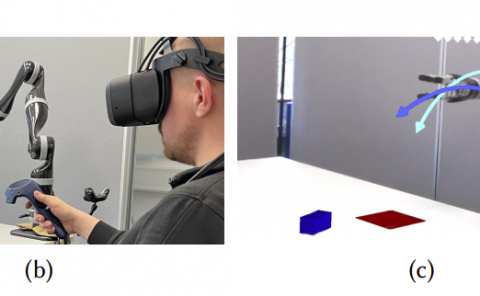Measuring the Perceived Three-Dimensional Location of Virtual Objects in Optical See-Through Augmented Reality
PubDate: November 2021
Teams: Mississippi State University;University of Nebraska–Lincoln
Writers: Farzana Alam Khan; Veera Venkata Ram Murali Krishna Rao Muvva; Dennis Wu; Mohammed Safayet Arefin; Nate Phillips; J. Edward Swan

Abstract
For optical see-through augmented reality (AR), a new method for measuring the perceived three-dimensional location of virtual objects is presented, where participants verbally report a virtual object’s location relative to both a vertical and horizontal grid. The method is tested with a small (1.95 × 1.95 × 1.95 cm) virtual object at distances of 50 to 80 cm, viewed through a Microsoft HoloLens 1 st generation AR display. Two experiments examine two different virtual object designs, whether turning in a circle between reported object locations disrupts HoloLens tracking, and whether accuracy errors, including a rightward bias and underestimated depth, might be due to systematic errors that are restricted to a particular display. Turning in a circle did not disrupt HoloLens tracking, and testing with a second display did not suggest systematic errors restricted to a particular display. Instead, the experiments are consistent with the hypothesis that, when looking downwards at a horizontal plane, HoloLens 1 st generation displays exhibit a systematic rightward perceptual bias. Precision analysis suggests that the method could measure the perceived location of a virtual object within an accuracy of less than 1 mm.



